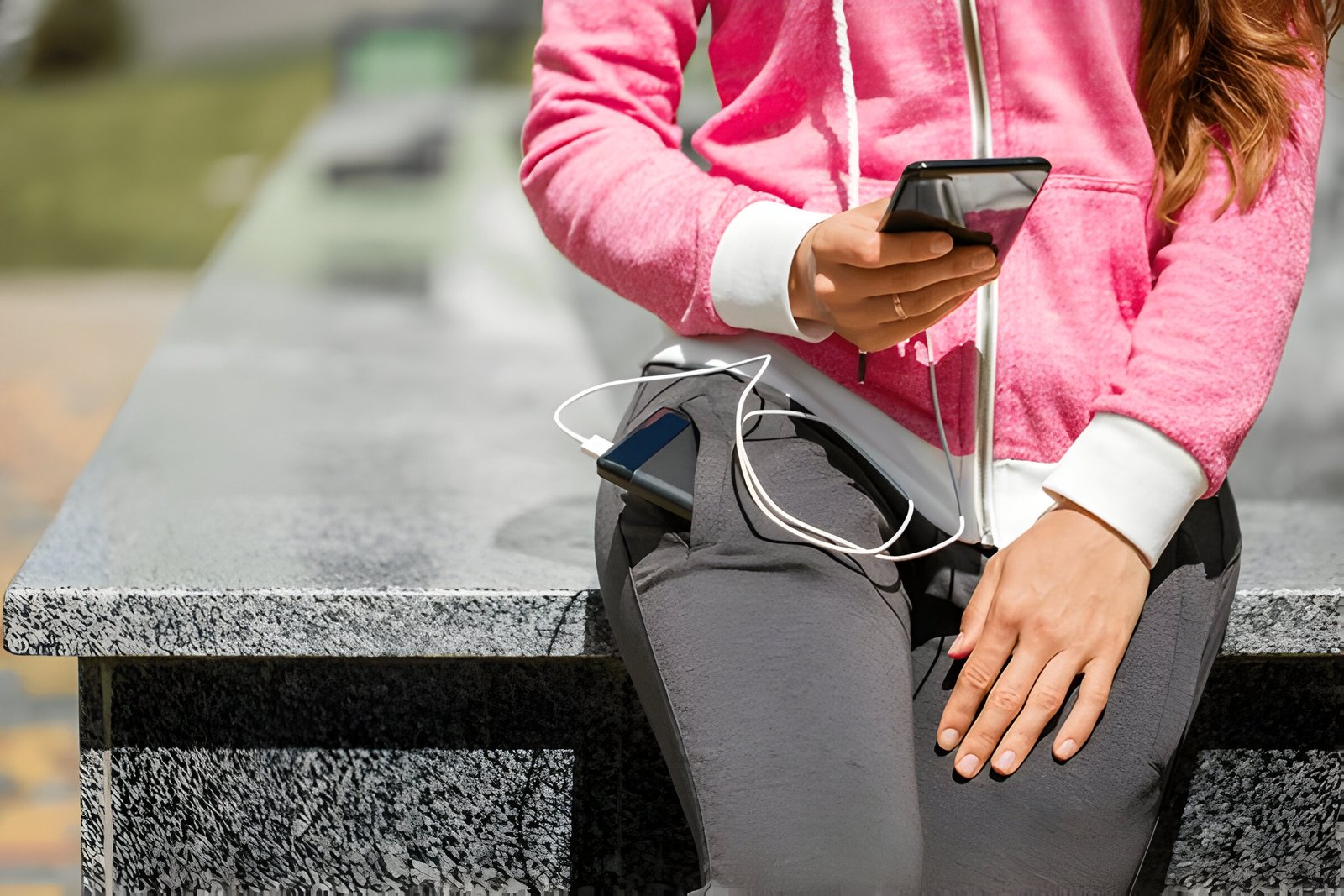In today’s fast-paced world, staying connected is crucial, especially when traveling or enjoying outdoor adventures. Portable power banks have become indispensable companions for those who need to keep their devices charged on the go. These compact and versatile gadgets ensure that smartphones, tablets, and other USB-powered devices remain operational, even in remote locations or during extended trips.
When choosing a portable power bank, travelers and outdoor enthusiasts have many factors to consider. Capacity, measured in mAh, determines how many charges a power bank can provide. Charging speed, compatibility with various devices, and additional features like wireless charging or MagSafe technology are also important. Moreover, durability and water resistance are key considerations for those venturing into rugged environments. This article will explore the best portable power banks available, their key features, and how to select the right one to meet individual needs.
Top Portable Power Banks for 2024
The portable power bank market has seen significant advancements in recent years, offering travelers and outdoor enthusiasts more options than ever before. With improved features and technologies, these devices provide reliable power solutions for various needs. Let’s explore some of the top portable power banks for 2024, categorized by their strengths.
Best Overall
The Anker 733 Power Bank stands out as the best overall choice for most users. This versatile device has the capability to charge phones and accessories quickly, and it even has enough power to charge a Chromebook or MacBook Air. Its combination of portability and power makes it an excellent companion for daily use and short trips.
For those who demand the absolute best in power bank technology, the Anker Prime 27,650mAh Power Bank (250W) is a top contender. This high-capacity device is perfect for tech enthusiasts who require substantial power for multiple devices. Its 250W output ensures fast charging for a wide range of electronics, from smartphones to laptops.
Another noteworthy option is the Anker PowerCore 10,000 mAh Redux. This power bank strikes a balance between portability and capacity, making it ideal for everyday carry. It features both USB-C and USB-A ports, catering to both new and older devices. The Redux’s compact size allows it to fit easily into pockets or bags, ensuring users always have a power source on hand.
Best Budget Option
For those seeking an affordable yet reliable power bank, the Miady 10,000 mAh Portable Charger offers exceptional value. This budget-friendly option comes as a two-pack, providing users with a backup power bank or the ability to share with a travel companion. Each unit has a capacity of 10,000 mAh, sufficient for two to three full smartphone charges. Despite its low price point, the Miady power bank includes standard safety features such as protection against overheating, surges, overcharging, and short-circuiting.
Another cost-effective choice is the Anker 313 Power Bank. With a 10,000 mAh capacity, it provides ample power for multiple device charges. Its simple one-button interface and integrated battery indicator lights make it user-friendly. The 313 also features a trickle-charge mode, which is ideal for safely charging smaller electronic devices like wireless earbuds or smartwatches.
Best for Camping
For outdoor enthusiasts and campers, the Goal Zero Yeti 700 is an excellent portable power station. This robust unit boasts a 677Wh capacity and impressive efficiency, making it suitable for powering various devices during extended camping trips. One of its standout features is the ability to display the power being consumed by the station, helping users manage their energy usage effectively.
The Anker Powerhouse 90 is another great option for camping adventures. It strikes a perfect balance between capacity and portability, providing enough power for essential devices without being overly bulky. This power bank includes useful features like a built-in flashlight and an AC outlet, which can be particularly handy in outdoor settings.
For those who prefer solar-powered options, the Hiluckey Power Bank with four foldable solar panels is worth considering. This innovative device can harness up to six watts of power in direct sunlight, making it ideal for remote locations where access to electrical outlets is limited. With a full charge, it can power a smartphone approximately seven times and can charge multiple devices simultaneously.
Key Features to Consider
When selecting a portable power bank, several crucial factors come into play. These features determine the device’s effectiveness, convenience, and suitability for various needs. Let’s explore the key aspects to consider when choosing a power bank.
Battery Capacity
Battery capacity, measured in milliampere-hours (mAh), indicates the amount of energy a power bank can store and deliver to devices. It essentially determines how many times the power bank can charge a device before requiring a recharge itself. A higher capacity means more charges, but it also typically results in a larger and heavier power bank.
For casual users or those needing occasional backup, a compact power bank with 3,000mAh to 5,000mAh capacity suffices. These provide a quick boost to smartphones when running low on battery. However, heavy users or those planning to charge multiple devices should opt for high-capacity power banks ranging from 10,000mAh to 20,000mAh. These robust units can charge phones multiple times, ensuring extended connectivity.
When choosing capacity, consider the battery size of the devices to be charged. A 10,000mAh power bank can recharge a smartphone up to three times, while a 20,000mAh model can provide more than six full charges. For multi-day trips without access to power outlets, larger capacities are ideal.
Charging Speed
The charging speed of a power bank refers to the amount of power it can deliver to devices, measured in amperes (A). A higher charging speed means faster device charging, but it may also result in quicker power bank discharge.
Output plays a crucial role in charging efficiency. Most power banks have multiple output ports with varying power ratings. Pay attention to the amperage and voltage of the outputs. For devices supporting fast charging, ensure the power bank can deliver the required power. Look for power banks with Quick Charge or Power Delivery (PD) technology, which can significantly reduce charging times.
Number of Ports
The number of USB ports on a power bank determines how many devices can be charged simultaneously. Some power banks come with a single USB port, while others feature multiple ports for charging various devices at once.
For users with multiple devices or those who often share their power bank with others, choosing a model with multiple USB ports is beneficial. Some power banks even include a USB-C port, which can charge newer devices at a faster rate. The versatility of multiple ports allows for charging smartphones, tablets, and other USB-powered devices concurrently.
Size and Weight
Portability is a key consideration when choosing a power bank. The size and weight of the device directly impact its convenience for everyday carry or travel use. Generally, size and weight increase with mAh capacity.
For those prioritizing portability, compact and slim power banks that easily slip into pockets or bags are ideal. These are perfect for one-day events or short trips. However, if extended power supply is needed, such as for multi-day hikes or camping trips, larger models may be necessary, despite being less pocket-friendly.
Consider the intended use and frequency of travel when selecting the size and weight of a power bank. A balance between capacity and portability ensures that the power bank meets power needs without becoming a burden to carry.
How to Choose the Right Power Bank
Assess Your Power Needs
Selecting the ideal power bank starts with evaluating power requirements. Users should create a list of devices and appliances they intend to power, then calculate their total running power in watts. This process involves adding up the power requirements of each item. For devices without a clear power rating, multiply the voltage (V) by the current (A) to determine the power (W).
Consider a scenario where the total power requirement is 600 watts. In this case, a power bank or portable power station with at least 600 watts of continuous power output would be necessary to meet these needs. However, the assessment doesn’t end there. Some devices require additional power when starting up, known as starting power or surge power. It’s crucial to identify the item with the highest starting power and ensure it doesn’t exceed the surge power rating of the chosen power bank.
Consider Your Activities
The choice of power bank depends heavily on the intended use and activities. For outdoor enthusiasts embarking on hunting trips, hiking adventures, or off-the-grid camping experiences, reliable power is essential. In these scenarios, a power bank becomes indispensable for powering various electronic devices such as GPS units, smartphones, action cameras, and portable speakers.
For such outdoor activities, capacity is a crucial factor. High-capacity power banks, like those offering 10,200mAh or 37.74 Wh, can charge multiple devices or fuel energy-intensive gear without running out of battery during adventures. Portability is another key consideration for outdoor use. Lightweight designs ensure the power bank won’t weigh users down, allowing them to stay agile and mobile while carrying other essentials.
Durability becomes paramount for outdoor gear. Look for power banks with features like MIL-STD-810G drop durability ratings and high crush ratings. Waterproof ratings, such as IP68, are also valuable for protecting against water damage in rugged conditions.
Check Device Compatibility
Compatibility between the power bank and devices is crucial for efficient charging. Users should examine the output specifications of potential power banks, including voltage and current. Most smartphones and tablets require specific inputs (e.g., 5V/2A) for efficient charging, while laptops often need higher voltages.
For those with devices supporting fast charging, consider power banks offering technologies like Power Delivery, Quick Charge, or other compatible fast charging options. The number and type of ports on a power bank are also important factors. Many high-capacity power banks come with multiple ports, including USB Type-A, USB Type-C, or even built-in cables for specific devices.
When selecting a power bank, users should also consider the input charging time – how long it takes to recharge the power bank itself. Models with higher input current and fast charging technology can significantly reduce recharge times, enhancing overall convenience.
By carefully assessing power needs, considering activities, and checking device compatibility, users can select a power bank that best suits their requirements, ensuring reliable power for their devices in various situations.
Best Practices for Using Power Banks
Proper Charging and Storage
To maintain the longevity and optimal performance of a power bank, users should follow proper charging and storage practices. It is crucial to use the original charger or a high-quality charger that provides the appropriate voltage and current for the specific power bank model. Low-quality or incompatible chargers can result in slower charging times and potentially damage the power bank.
When charging a power bank, it is advisable to do so in a cool and well-ventilated area. High temperatures can have a detrimental effect on the battery’s performance and lifespan. Users should avoid exposing their power banks to direct sunlight or extreme temperatures, as these conditions can accelerate the degradation of the battery cells.
It is recommended to charge the power bank to about 80% capacity rather than 100%. Overcharging can shorten the device’s lifespan and reduce its overall capacity. Additionally, users should avoid leaving their power banks on prolonged charge, as this may cause overheating. Following the manufacturer’s guidelines on charging time is essential.
For storage, it is best to keep the power bank in a cool and dry place away from heat sources, moisture, and dust. Avoid storing it in places with high temperatures, such as cars parked under the sun. It is also advisable to use the power bank regularly, at least once a month, to maintain its battery health.
Airline Regulations
When traveling by air, it is essential to be aware of the regulations regarding power banks. The Transportation Security Administration (TSA) has specific guidelines for carrying these devices on flights. Power banks are generally allowed in carry-on baggage but not in checked luggage due to their lithium-ion batteries.
Travelers should note that power banks may be subject to additional screening at security checkpoints. TSA officers may ask passengers to power up their electronic devices, including power banks, to ensure they are functioning correctly. Devices that cannot be powered on will not be permitted onboard the aircraft.
It is advisable to check with the specific airline and review TSA guidelines before traveling, as regulations may vary or change. Passengers should also be prepared to answer questions about their power banks if asked by security personnel.
Extending Battery Life
To maximize the lifespan of a power bank, users should follow several best practices. Avoiding overloading is crucial; users should not charge too many devices simultaneously, as this can cause excessive heat and damage the battery. It is also recommended not to use the power bank while it is charging, as this can overload the circuit.
Regular maintenance is essential for preserving battery life. Users should clean their power banks regularly, especially the USB ports, to prevent the buildup of dirt and debris that can hamper charging efficiency. When cleaning, use a soft cloth to wipe the surface and remove any fingerprints or dust.
To prevent short circuits, it is important to keep power banks away from metal objects such as coins, paper clips, and keys. Users should avoid inserting any metal objects into the USB output port or joining terminals of the power bank.
Lastly, users should handle their power banks with care. Dropping a power bank can damage its internal components and risk short-circuiting the device. If a power bank is dropped, it should be inspected for damage before use. By following these best practices, users can ensure their power banks remain reliable sources of portable power for their devices.
Power Banks for Different Types of Travelers
Business Travelers
Business travelers require power banks that offer reliability, versatility, and substantial charging capacity. For these professionals, a power bank like the Anker Prime 27,650mAh Power Bank (250W) is an excellent choice. This high-capacity device can charge multiple devices, including laptops, smartphones, and tablets, making it ideal for those who need to stay connected during long flights or extended meetings.
The Anker 733 Power Bank is another versatile option that business travelers should consider. It has the capability to charge phones and accessories quickly and can even power a Chromebook or MacBook Air. Its combination of portability and power makes it an excellent companion for daily use and short business trips.
For those who prioritize a sleek design, the Baseus Blade HD power bank offers a thin, flat design that fits easily into a laptop bag without risking damage to other devices. This feature is particularly useful for business travelers who need to maximize space in their carry-on luggage.
Backpackers
Backpackers and outdoor enthusiasts require power banks that are lightweight, durable, and weather-resistant. The Nitecore NB 10000 Gen2 is an excellent choice for this group. Its carbon fiber shell provides durability without adding excessive weight, making it ideal for those who count every ounce in their pack.
For backpackers who need a reliable power source for their safety devices, the Goal Zero Yeti 700 is a robust option. This portable power station boasts a 677Wh capacity and impressive efficiency, making it suitable for powering various devices during extended camping trips. Its ability to display power consumption helps users manage their energy usage effectively.
The Klarus K5 power bank is another excellent option for backpackers. Its carbon fiber cladding makes it ultralight and ultra-thin, while its IP68 waterproof rating ensures it can withstand harsh outdoor conditions. This resilience is crucial for anyone leading an active outdoor lifestyle.
Family Vacationers
Family vacationers often need power banks that can charge multiple devices simultaneously and offer substantial capacity for extended use. The Mophie Powerstation Pro AC is an excellent choice for families on the go. Its massive capacity and multiple ports, including a three-prong AC outlet, make it versatile enough to power various devices, from smartphones and tablets to portable speakers and even small printers.
The Lion Energy Trek power bank is another suitable option for family vacations. With a 27,000mAh capacity and multiple USB ports plus an AC plug, it can keep all family members’ devices charged throughout the trip. Its rugged exterior also makes it more durable for family use.
For families who prefer a more compact option, the Miady 10,000 mAh Portable Charger offers excellent value. This budget-friendly option comes as a two-pack, allowing family members to share or have a backup power bank. Each unit has sufficient capacity for two to three full smartphone charges, making it ideal for day trips or short family outings.
Regardless of the type of traveler, having a reliable power bank has become essential in today’s connected world. Whether it’s for business presentations, navigating unfamiliar terrain, or keeping the kids entertained during long journeys, the right power bank can make all the difference in ensuring a smooth and stress-free travel experience.
Innovative Power Bank Technologies
The realm of portable power banks has seen significant advancements in recent years, with innovative technologies enhancing their functionality and convenience. These developments have revolutionized the way users charge their devices on the go, offering more efficient and versatile solutions.
Solar-Powered Options
Solar-powered power banks have emerged as an eco-friendly alternative for charging devices. These units combine traditional battery storage with solar panels, aiming to harness renewable energy for charging. However, the effectiveness of solar power banks varies significantly depending on their design and size.
Most compact solar power banks face limitations due to their small solar panels. For instance, a panel a tenth the size of a standard portable solar panel would require approximately 70 hours of direct sunlight to fully charge a 10,000mAh power bank. This extended charging time makes them impractical for everyday use, especially in areas with limited sunlight.
For those seeking a more effective solar charging solution, options like the BioLite SolarPanel 5+ offer a better balance. This device prioritizes the solar panel over the battery, featuring a comparatively large panel connected to a small battery. Such designs prove more functional for emergency backup situations or outdoor adventures where access to traditional power sources is limited.
Alternatively, users interested in solar charging might consider purchasing a separate solar panel to pair with their power bank. This approach allows for more efficient solar charging while providing the flexibility to use the power bank independently.
Wireless Charging
Wireless charging has transformed the landscape of portable power solutions, offering unprecedented convenience in device charging. Many manufacturers now incorporate wireless charging capabilities into their power banks, utilizing Qi technology for cable-free power transfer.
The primary advantage of wireless charging lies in its simplicity. Users can simply place their compatible devices on the power bank’s charging surface, eliminating the need for cables and reducing wear on device ports. This technology has been widely adopted by major smartphone manufacturers, including Apple, Samsung, and Huawei, making it increasingly prevalent in modern devices.
Recent advancements have further improved wireless charging efficiency. The introduction of the Qi2 wireless charging standard has enhanced performance, particularly for iPhones. As an open standard, it’s expected to be adopted by other manufacturers in the future, potentially leading to faster and more efficient wireless charging across various devices.
Fast Charging Protocols
Fast charging technologies have significantly reduced the time required to charge devices, making power banks more efficient than ever. Many modern power banks now incorporate advanced charging protocols that can rival the speed of wired charging methods.
Quick Charge technology, for instance, has become a standard feature in many high-quality power banks. This technology allows for rapid charging of compatible devices, significantly reducing the time needed to restore battery life. Some power banks can now deliver up to 250W of power, enabling them to charge multiple devices simultaneously, including laptops and tablets.
The adoption of USB-C ports in power banks has also contributed to faster charging speeds. USB-C supports higher power delivery, allowing for quicker charging of compatible devices. This universal standard has improved compatibility across different devices, making power banks more versatile.
As these technologies continue to evolve, power banks are becoming increasingly efficient and user-friendly. The combination of wireless charging, solar options, and fast charging protocols offers users a range of choices to suit their specific needs, whether for everyday use, travel, or emergency situations.
Maintaining and Troubleshooting Your Power Bank
Power banks have become essential accessories for keeping electronic devices charged on the go. However, like any electronic device, they can encounter issues and require proper maintenance. This section explores common problems, when to replace your power bank, and how to recycle old units responsibly.
Common Issues
Power bank users may encounter several issues that can affect performance and reliability. One frequent problem is insufficient capacity, where the device doesn’t deliver the expected runtime. This can occur due to lower actual capacity than advertised or degradation over time. To avoid this, it’s crucial to choose power banks from reputable manufacturers and read customer reviews.
Slow charging speed is another common issue, often caused by low-quality cables, insufficient power output, or compatibility problems. Using high-quality cables and ensuring the power bank has adequate output capabilities can help address this problem.
Overheating during prolonged charging or high-power output is a concern that can affect performance and pose safety risks. Users should operate power banks in well-ventilated areas and avoid exposing them to extreme temperatures.
Inaccurate battery indicators can lead to unexpected power depletion. It’s advisable to use the power bank’s battery level as an estimation rather than relying solely on it. Compatibility issues may arise with certain devices or charging protocols, so it’s important to check compatibility before purchasing.
When to Replace
Several signs indicate it’s time to replace a power bank:
- Age: If the power bank is older than 2-3 years, it may be nearing the end of its lifespan.
- Decreased capacity: If the power bank delivers significantly less power than its original capacity, it’s time for a replacement. A simple test involves fully charging the power bank and then using it to charge a device while measuring the output. If the remaining capacity is below 70-80% of the original, consider replacing it.
- Charging behavior: If the power bank takes much longer to charge or doesn’t reach full charge, it may indicate capacity degradation.
- Physical damage: Swelling, cracks, or damage to ports and cables are signs that the power bank needs replacement.
- Overheating: Excessive heat during charging or discharging can signal battery wear and the need for replacement.
Recycling Old Power Banks
Proper disposal of old power banks is crucial for environmental safety. Here are steps to recycle them responsibly:
- Check manufacturer recommendations: Some manufacturers provide specific instructions for disposing of their products.
- Remove the battery: If possible, remove the battery from the power bank and place it in a plastic bag or non-metallic container.
- Find a recycling center: Many recycling centers accept lithium-ion batteries. Check with local facilities to find one that handles power banks.
- Never dispose in regular trash: Lithium-ion batteries can be hazardous in landfills, potentially causing environmental damage.
- Consider donation: If the power bank is still functional, consider donating it to organizations that accept electronic donations.
- Discharge before disposal: For lithium-based batteries, fully discharge the power bank before recycling. Some methods involve soaking the battery in a brine solution until the voltage across the terminals reaches zero.
By following these guidelines for maintenance, troubleshooting, and responsible disposal, users can maximize the lifespan of their power banks and minimize environmental impact when it’s time for replacement.
Conclusion
Portable power banks have become indispensable tools for modern travelers and outdoor enthusiasts. These devices have a significant impact on our ability to stay connected and powered up, even in remote locations or during extended trips. The wide range of options available, from high-capacity units for multi-day adventures to compact models for everyday carry, ensures that there’s a suitable power bank for every need and preference. By taking into account factors such as capacity, charging speed, and durability, users can select a power bank that best fits their lifestyle and device requirements.
As technology continues to evolve, power banks are becoming more efficient, versatile, and user-friendly. The introduction of features like wireless charging, solar power options, and fast charging protocols is changing the way we think about portable power. To make the most of these devices, it’s crucial to follow best practices for charging, storage, and maintenance. By doing so, users can extend the lifespan of their power banks and ensure reliable performance when it matters most. Whether for business trips, outdoor adventures, or family vacations, a well-chosen power bank can provide peace of mind and keep devices running when traditional power sources are unavailable.
FAQs
What is the ideal power bank capacity for hiking?
For hiking trips that last 4-5 days, involve carrying several rechargeable devices, or if you’re sharing the power bank with a partner, it’s advisable to opt for a high-capacity power bank. A 10,000 mAh battery usually suffices for hikers with less extensive power needs.
How large should a power bank be for travel purposes?
When selecting a power bank for travel, aim for a capacity that is three to four times the battery size of your device. If you’re planning to charge larger devices like tablets, you’ll need a power bank with a significantly higher capacity.
What are the best power banks to carry on airplanes?
The top TSA-approved power banks include the Clutch Pro USB-C Portable Charger, Mophie Powerstation 2023, Anker 321 MagGo Battery, Anker PowerCore+ 26800mAh PD 45W with 60-Watt PD Charger, Anker Power Bank Power Core Slim, Anker PowerCore Fusion 5000 Portable Charger, Satechi Quatro Wireless Power Bank, and Zendure 10,000mAh Portable Charger.
Which is the strongest and most recommended power bank for 2024?
The leading power banks for 2024 are the Anker 733 Power Bank (GaNPrime PowerCore 65W), Anker Prime 27,650mAh Power Bank (250W), Anker Nano Power Bank (22.5W), Baseus Magnetic Foldable Power Bank 20W 10000mAh, Baseus Airpow Power Bank 20W 10000mAh, and the Otterbox 2-in-1 Power Bank with Apple Watch Charger.











